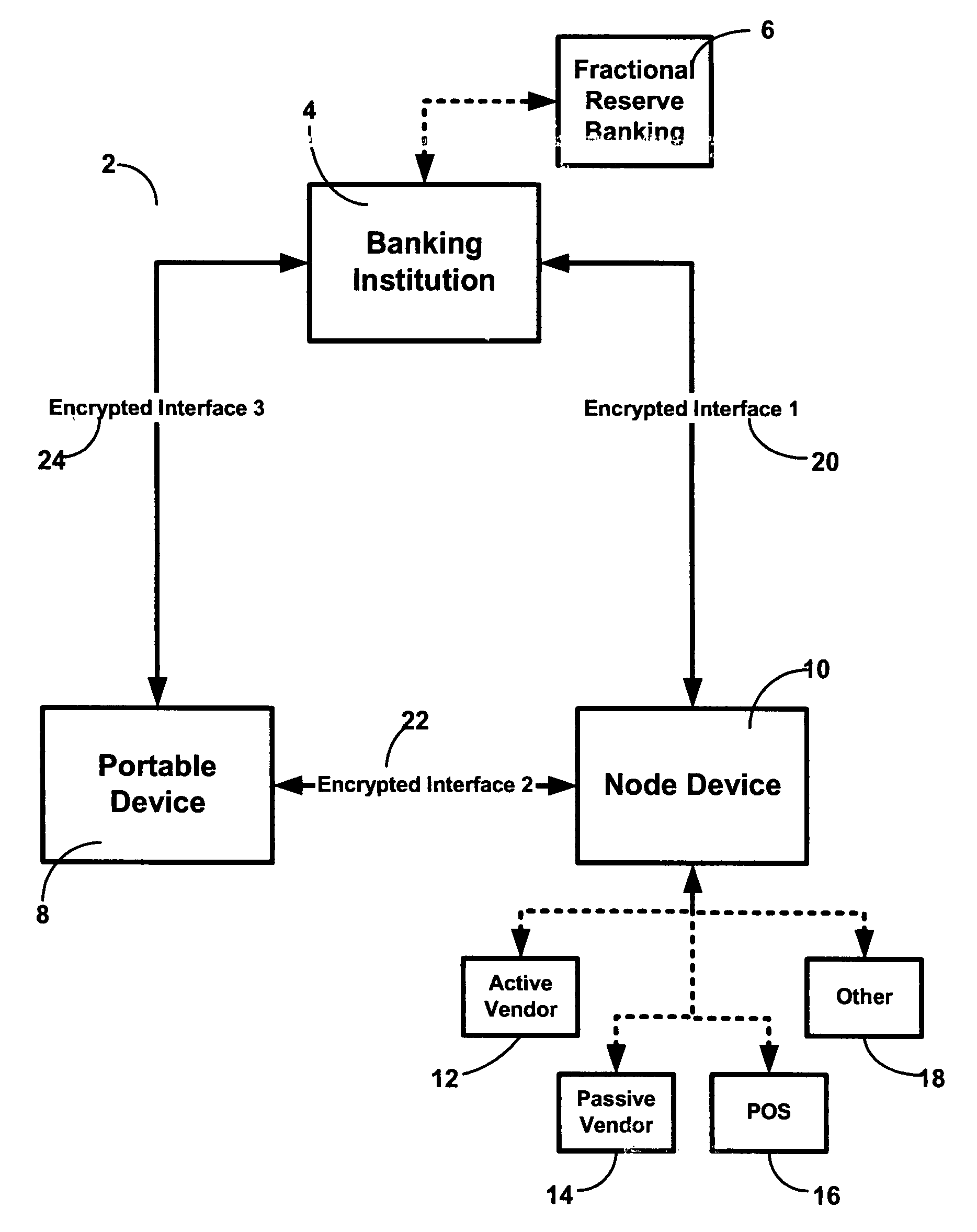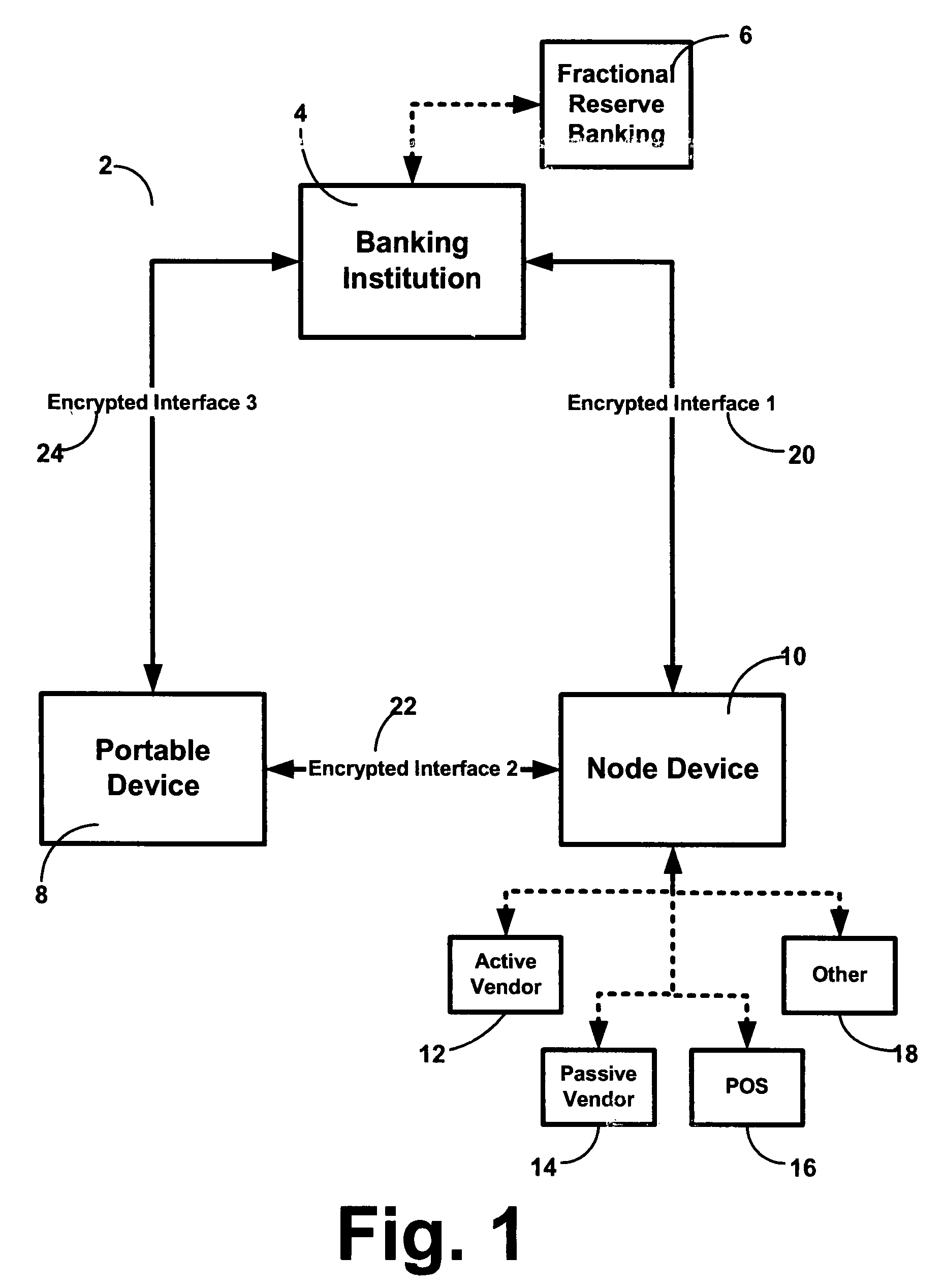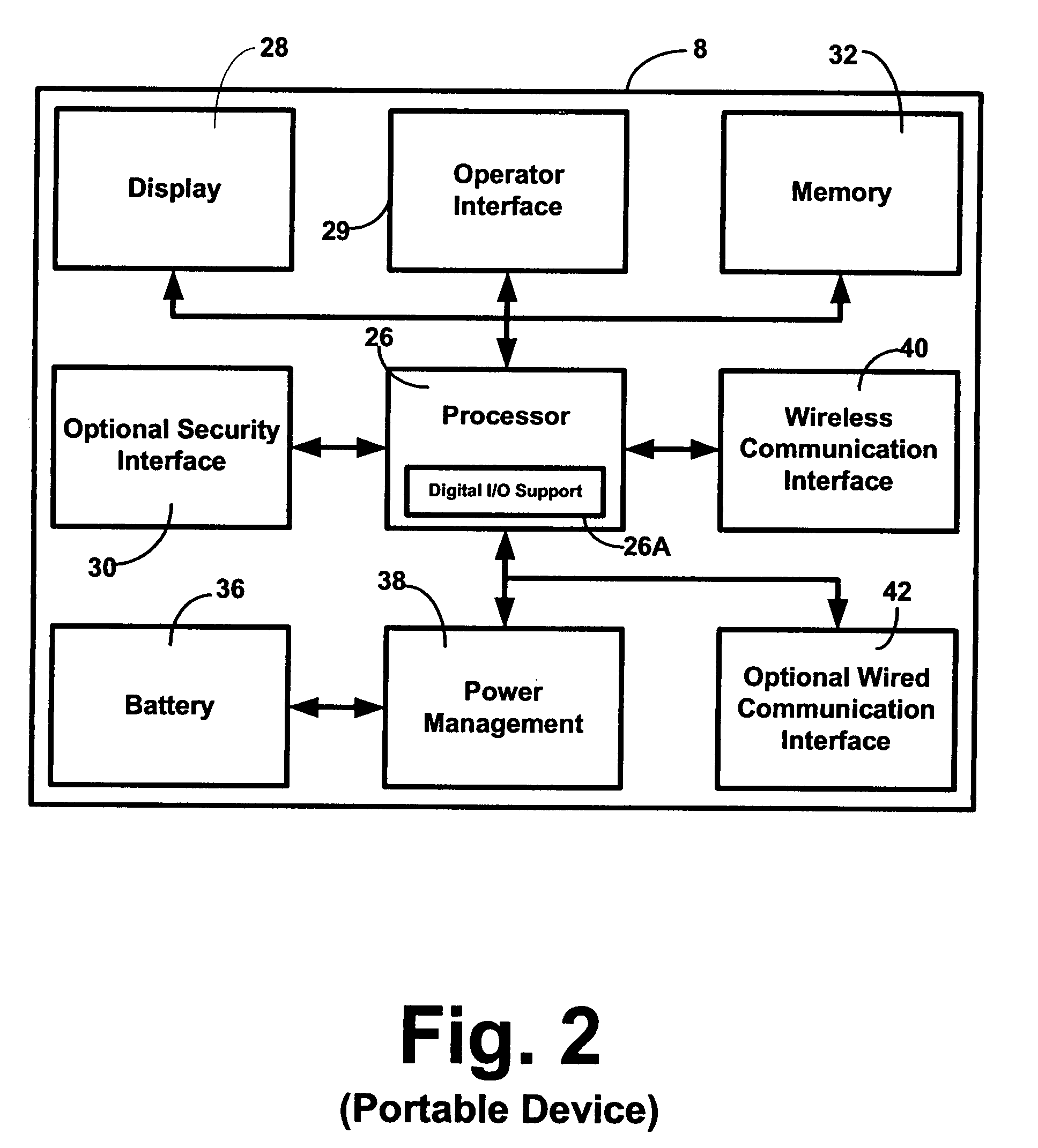Method, system and apparatus for increasing the deposit-based assets of banking institutions subject to fractional-reserve banking
a fractional reserve and deposit-based asset technology, applied in the field of methods, systems and apparatus for use in banking, can solve the problems of not being seen or used by anyone, all those storage containers are not worth the effort, and the consumer would rather give away what, so as to reduce the nuisance, accurately affect the commercial transaction, and increase the asset base
- Summary
- Abstract
- Description
- Claims
- Application Information
AI Technical Summary
Benefits of technology
Problems solved by technology
Method used
Image
Examples
Embodiment Construction
[0076]In accordance with the subject invention, FIG. 1 shows the system and components 2, wherein banking institution 4 is seeking to capture some of the fractional currency in this preferred embodiment and to add the same to its asset base (reserve) for fractional-reserve banking 6. A first account associated with portable device 8 and a second account associated with node device 10 are resident in banking institution 4 for the purposes of enabling fractional currency-based transactions. Such accounts are established in advance of enabling the system and apparatus, and never leave the bank 4. Indeed, despite the fact that transactions occur between the two accounts, the underlying currency merely moves from one location to another, but remains intra-bank 4. In this manner, the actual asset base of the bank remains unchanged, while the currency moves between accounts. Thus, the fractional-reserve banking remains unchanged, despite the differences between account balances, as the ass...
PUM
 Login to View More
Login to View More Abstract
Description
Claims
Application Information
 Login to View More
Login to View More - R&D
- Intellectual Property
- Life Sciences
- Materials
- Tech Scout
- Unparalleled Data Quality
- Higher Quality Content
- 60% Fewer Hallucinations
Browse by: Latest US Patents, China's latest patents, Technical Efficacy Thesaurus, Application Domain, Technology Topic, Popular Technical Reports.
© 2025 PatSnap. All rights reserved.Legal|Privacy policy|Modern Slavery Act Transparency Statement|Sitemap|About US| Contact US: help@patsnap.com



